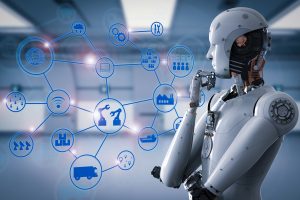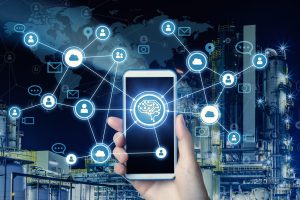The Role of AI in Predictive Analytics: A Comprehensive Exploration Predictive analytics is the practice of analyzing historical data and using statistical algorithms and machine learning models to make predictions about future events. As businesses and industries continue to generate massive amounts of data, traditional methods of forecasting are increasingly insufficient. This is where Artificial
The Role of AI in Predictive Analytics: A Comprehensive Exploration
Predictive analytics is the practice of analyzing historical data and using statistical algorithms and machine learning models to make predictions about future events. As businesses and industries continue to generate massive amounts of data, traditional methods of forecasting are increasingly insufficient. This is where Artificial Intelligence (AI) comes into play. By leveraging AI, businesses can gain a deeper understanding of patterns and trends, make more accurate predictions, and unlock the potential of their data.
AI’s role in predictive analytics has evolved significantly in recent years, owing much to advancements in machine learning (ML), deep learning (DL), and big data technologies. Today, AI is not just a tool for enhancing predictions but a transformative force that is reshaping industries, optimizing decision-making, and creating new opportunities. This article explores the latest developments, key use cases, and case studies that demonstrate the significant impact of AI on predictive analytics.
Understanding Predictive Analytics

Image by Yandex.com
At its core, predictive analytics is about using data to anticipate future outcomes. While traditional methods relied heavily on statistical techniques, the rise of artificial intelligence has added new layers of sophistication. AI models, particularly machine learning algorithms, can analyze vast datasets at unprecedented speed and accuracy, uncovering hidden patterns and correlations that would be difficult or impossible for humans to detect.
Predictive analytics typically involves the following stages:
- Data Collection: Gathering historical data from various sources, including transactional records, sensor data, customer feedback, etc.
- Data Preparation: Cleaning and organizing data to ensure its quality and usability for analysis.
- Modeling: Applying AI algorithms (e.g., decision trees, neural networks) to build predictive models.
- Prediction: Using these models to make forecasts about future events or behaviors.
- Optimization: Continuously refining the model as more data is collected and predictions are compared against actual outcomes.
AI’s Integration with Predictive Analytics
AI has revolutionized the way predictive models are developed and deployed. Traditional predictive models were often limited by the need for extensive manual intervention, rigid assumptions, and rule-based logic. In contrast, AI allows models to learn and improve over time based on new data, ensuring more accurate and adaptive predictions.
AI-based predictive analytics employs advanced algorithms and techniques, including:
- Supervised Learning: Where the model is trained using labeled data to predict outcomes based on historical examples.
- Unsupervised Learning: Where the model identifies patterns in data without prior labels or classifications.
- Reinforcement Learning: Where algorithms learn by interacting with the environment and receiving feedback in the form of rewards or penalties.
- Deep Learning: A subset of machine learning that uses artificial neural networks with many layers (hence the term “deep”) to model complex relationships in large datasets.
Key Benefits of AI in Predictive Analytics
AI-driven predictive analytics provides numerous benefits across a range of industries. These benefits include:
- Improved Accuracy: AI models are capable of processing large datasets with numerous variables, leading to more accurate predictions. For example, in the financial sector, AI can predict market trends more reliably by analyzing historical price movements, sentiment analysis, and macroeconomic factors.
- Real-time Predictions: With AI, organizations can generate real-time forecasts based on live data. This is particularly useful in industries like finance and healthcare, where conditions can change rapidly.
- Personalization: AI enables businesses to create highly personalized experiences for customers. For example, AI-powered recommendation engines can predict products a user may be interested in based on their previous behavior and preferences.
- Cost Reduction: Predictive maintenance, powered by AI, helps reduce downtime by predicting equipment failures before they occur, allowing businesses to take proactive measures.
- Improved Decision-Making: AI can process complex datasets and identify patterns that human analysts may miss, leading to better decision-making across departments like marketing, supply chain management, and customer service.
Real-World Applications and Case Studies

Image by Yandex.com
AI in Predictive Maintenance
Predictive maintenance is a critical area where AI-powered predictive analytics is having a transformative impact, particularly in industries like manufacturing, aviation, and energy. By using AI to monitor equipment performance and predict failures before they happen, organizations can save millions of dollars in repair costs and minimize production downtime.
Case Study: General Electric (GE)
GE, a leader in industrial manufacturing, has embraced AI for predictive maintenance in its industrial machinery. By using sensors to collect data on machine performance and using machine learning algorithms to predict failures, GE has been able to reduce maintenance costs by up to 10-20% and increase the lifespan of their machinery.
AI tools like Google Cloud’s AI and ML models and IBM Watson IoT have also been implemented across various industries to enhance predictive maintenance efforts. These tools analyze sensor data in real time, predicting when equipment will need servicing or replacement, thus preventing costly and unplanned downtime.
AI in Healthcare Predictive Analytics
The healthcare industry is another area where AI-powered predictive analytics is making significant strides. AI models are now being used to predict patient outcomes, optimize treatment plans, and even forecast disease outbreaks. These capabilities are helping to move healthcare from a reactive to a proactive approach.
Case Study: Mount Sinai Health System
Mount Sinai, a large healthcare provider, partnered with IBM Watson to harness the power of AI in predicting patient outcomes. By analyzing patient data, including medical history, test results, and genetic information, AI is helping doctors make better predictions about a patient’s future health risks, such as the likelihood of heart failure or diabetes. This predictive approach allows healthcare providers to intervene earlier and provide personalized treatment plans.
Additionally, AI is being used for predictive diagnostics in medical imaging, where deep learning algorithms can analyze radiology images to detect conditions such as cancer with remarkable accuracy. AI tools, like Google Health’s AI model, are being employed to predict the presence of lung cancer in CT scans, helping doctors detect issues at earlier, more treatable stages.
AI in Retail and Customer Behavior Prediction
Retailers have also found great success in using AI for predictive analytics, particularly in forecasting customer behavior, demand, and inventory management. AI helps companies anticipate customer needs by analyzing past purchasing behavior, browsing habits, and even social media activity.
Case Study: Amazon3
Amazon is one of the best-known companies to leverage AI in predictive analytics. Its recommendation engine uses AI algorithms to suggest products to customers based on their previous searches and purchases, increasing the likelihood of a sale. Amazon has perfected the art of personalized recommendations, which account for a significant portion of its revenue.
Moreover, AI in demand forecasting helps Amazon predict which products will be in high demand and adjust inventory levels accordingly. This predictive capability allows the company to optimize its supply chain and improve customer satisfaction by reducing instances of stockouts or delays.
AI in Financial Services and Fraud Detection
In the financial sector, AI-powered predictive models are being used to assess risks, detect fraud, and predict market trends. By analyzing large amounts of financial data and transaction patterns, AI can uncover irregularities that may indicate fraudulent activity.
Case Study: JPMorgan Chase
JPMorgan Chase uses AI for credit card fraud detection. By employing machine learning models, the bank can analyze transaction data in real time and flag suspicious activities almost immediately. This helps prevent fraudulent transactions and enhances security for both the bank and its customers.
Additionally, AI-based predictive analytics are used by investment firms to forecast market trends, helping investors make more informed decisions. Firms like BlackRock use machine learning algorithms to analyze financial data and predict stock market movements.
AI in Supply Chain Optimization
AI is revolutionizing supply chain management by improving demand forecasting, inventory management, and route optimization. By predicting customer demand with greater accuracy, businesses can ensure they maintain the right levels of stock, reducing both overstocking and stockouts.
Case Study: Walmart
Walmart has long been a leader in supply chain management, and AI has taken its operations to the next level. By leveraging machine learning models to forecast demand for thousands of products, Walmart ensures that its inventory is optimized at each store location. During major sales events like Black Friday, AI helps the retailer anticipate demand spikes and adjust its supply chain strategy accordingly.
Challenges and Ethical Considerations

Image by Yandex.com
While AI in predictive analytics brings undeniable advantages, there are also challenges and ethical concerns to consider. These include:
- Data Privacy: As AI systems rely heavily on data, particularly personal and sensitive information, privacy concerns are paramount. Companies must ensure they comply with data protection regulations like GDPR and provide transparency on how they use customer data.
- Bias in AI Models: AI models can inherit biases from the data they are trained on. If the training data is skewed or unrepresentative, the predictions made by the AI model may be inaccurate or discriminatory. Companies must actively work to mitigate bias in their predictive models by using diverse datasets and testing for fairness.
- Explainability: As AI models become more complex, they can become “black boxes,” where the decision-making process is not transparent. Explainable AI (XAI) is a growing field aimed at making AI models more interpretable and ensuring that their predictions are understandable to human users.
Conclusion
AI has revolutionized predictive analytics, providing businesses with the ability to make more accurate, real-time predictions that drive decision-making and optimize operations. From healthcare to retail and finance, AI is transforming industries by providing insights that were once out of reach.
As AI technologies continue to evolve, it’s clear that predictive analytics will play an even greater role in shaping the future of business. The ability to predict customer behavior, optimize supply chains, prevent equipment failures, and improve healthcare outcomes represents just a fraction of the possibilities.
However, with these advancements come important responsibilities, particularly around data privacy, ethics, and bias mitigation. As companies adopt AI-driven predictive analytics, they must ensure that these technologies are used transparently, fairly, and responsibly, keeping the well-being of individuals and society at the forefront.
















